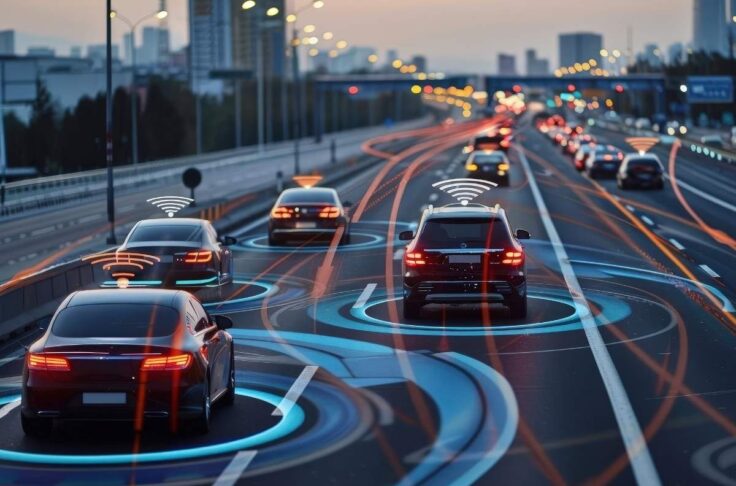Acceleration-Based Telematics Features in Shared Mobility (pt. 2)
Summary
Acceleration-based telematics features are key to enhanced driving analysis. They enable fleet operators to check the driving characteristics of their vehicles in real-time. This article explores how event detection and analysis of moving vehicles give operators the advanced data they need to better understand what’s happening during rentals.

Fleet operators use telematics and connectivity solutions to let clients find and access vehicles, to pull data for seamless user experiences, and to increase business efficiency. Aside from these core functions, telematics systems are also able to provide additional, advanced data using built-in accelerometers. Having already looked at acceleration-based telematics features for parked vehicles, let’s now see how those same features provide shared mobility operators with useful data and analysis of vehicles in motion.
The value of acceleration event insights
Insights from advanced accelerometer data can help detect and discourage unwanted driving behaviours. This has several benefits for shared mobility operators:
Reduced fleet operational costs and environmental impact. Bad, aggressive driving causes additional and hard to detect wear and tear on vehicles. Advanced Telematics acceleration data lets operators monitor vehicle movements in enough detail to identify and reward vehicle-friendly and eco-friendly driving styles. For example, operators could potentially use the data insights to:
- Provide real-time feedback to drivers
- “Gamify” driving stats
- Adjust pricing based on driver score
- Cancel bad drivers’ contracts for non-compliance
Keeping vehicles attractive and available for use. Most carsharing operators do not see and inspect their vehicles daily, sometimes not even weekly, or bi-weekly. This means they can be unaware of repairs or early maintenance needed due to bad and aggressive driving. Accelerometers detect potentially damaging behaviour, so that operators can inspect their vehicles before the next client discovers any damage.
Get alerts and share insights on trips, events, and incidents quickly and easily. Easily accessible and complete trip data lets operators assist accident investigations by local authorities with minimal administrative effort. Real-time alerts and updates reduce emergency response times to accidents. They also provide insights into the severity, location, and time of events, and whether they happened during a client’s rental.
CloudBoxx analysis of acceleration events
INVERS Driving Analysis processes sensor data from CloudBoxx in real-time and triggers events when vehicles exceed operator-set thresholds. The CloudBoxx is the only hardware required as it has sensors to capture, measure, and interpret acceleration, vehicle location, and speed data in real-time. Operators can set thresholds in G-units for shock and motion detection events, and in acceleration duration for motion events. The events are then available in FleetControl or via API, and for vehicles in motion they include:
Heavy braking
When the brakes are hit hard, the vehicle speed drops suddenly and CloudBoxx sensors detect the negative acceleration. The system then triggers and records an event if the negative acceleration exceeds the operator-set threshold. Braking events also include brake pedal position measured in percentage depressed.
Hard cornering
CloudBoxx detects lateral accelerations when vehicles go around a corner. These accelerations increase with speed or with the tightness of the corner. Just like in the case of heavy braking, operators can set thresholds to trigger events when drivers go around traffic circles too fast, take corners too quickly, or play with their vehicles by making figure-eights as illustrated below. The default threshold is 1 G-unit, which is usually just enough to make the tires squeal. Cornering events also include steering wheel position measured in degrees.

Speeding events
CloudBoxx reads the speed from vehicles’ CAN bus. The system checks these values against local speed limits and logs speeding events as soon as thresholds are exceeded.
Crash events
When CloudBoxx detects sudden, excessive G-forces (we recommend a threshold above 1.5Gs), it notifies operators in real-time about crash events. FleetControl logs all crash events for further analysis. The historical trip data helps with the evaluation of accident, and operators can use it to assist with investigations.
Conclusion
Shared mobility providers who want more sustainable and safer fleet operations can put advanced telematics acceleration data to good use. Data insights from moving vehicles can help identify bad drivers and incentivize good driving behaviours. They can also help to vehicles attractive for clients, and reduce the effort needed to investigate accidents.
Please contact our experts to learn more about INVERS Driving Analysis and how shared mobility providers benefit from CloudBoxx acceleration-based features.


